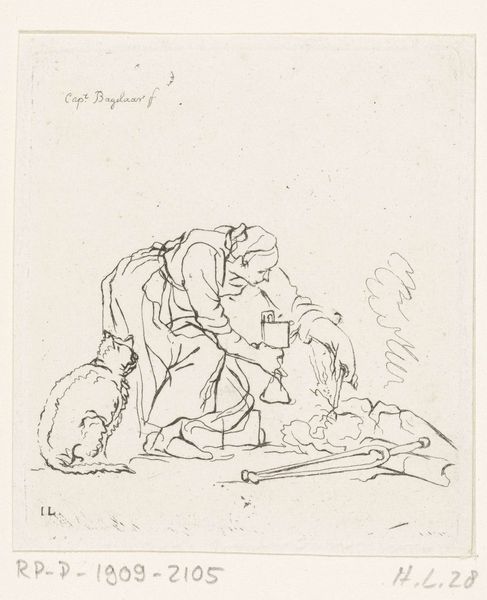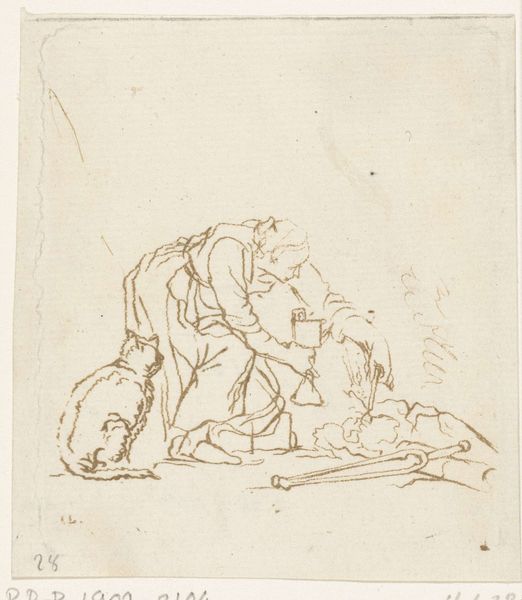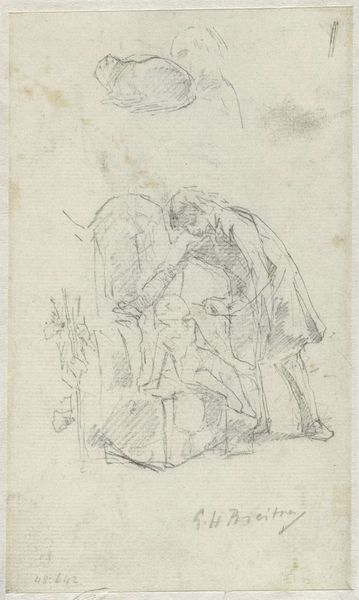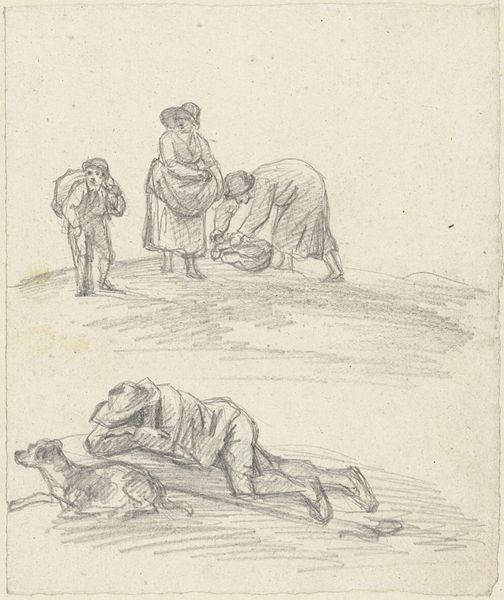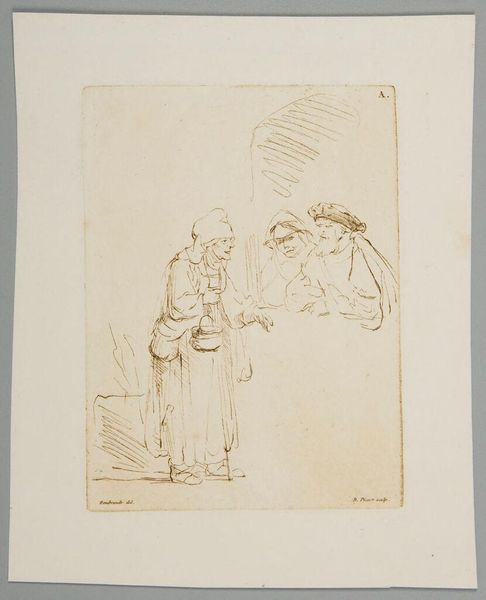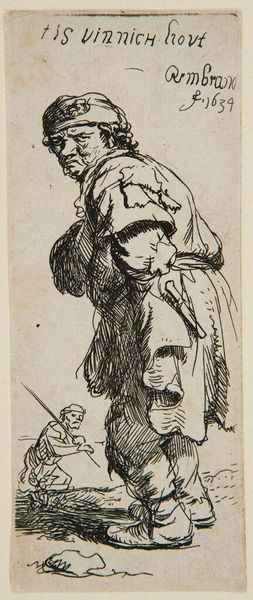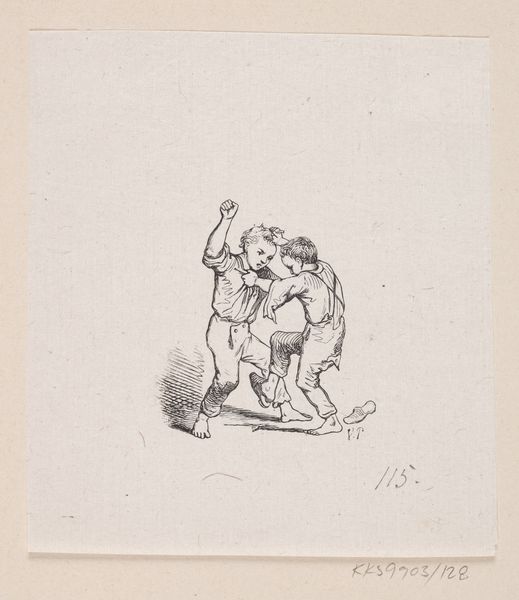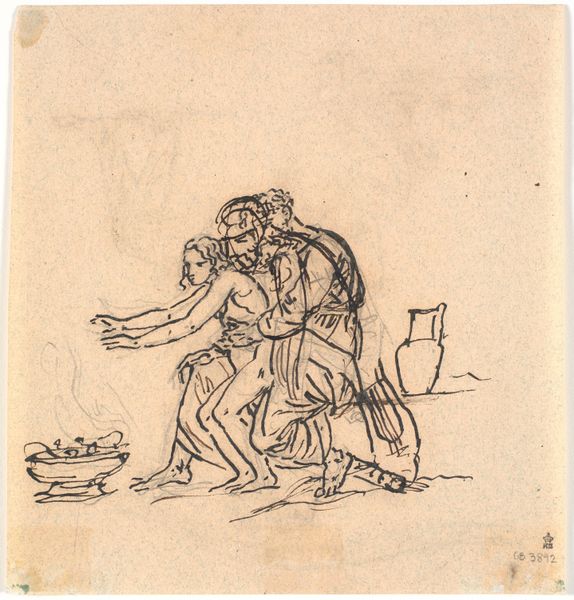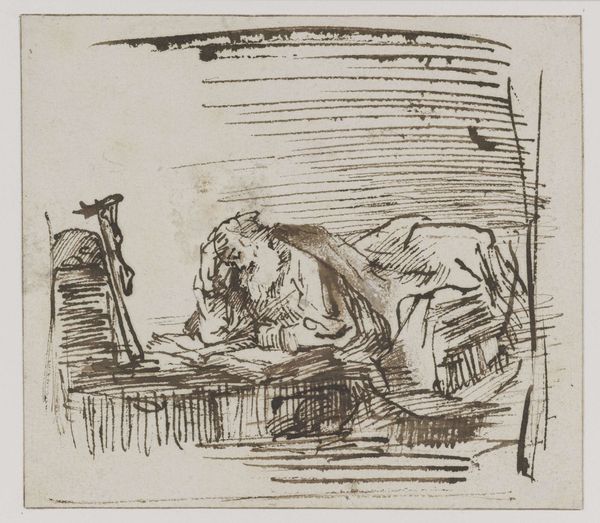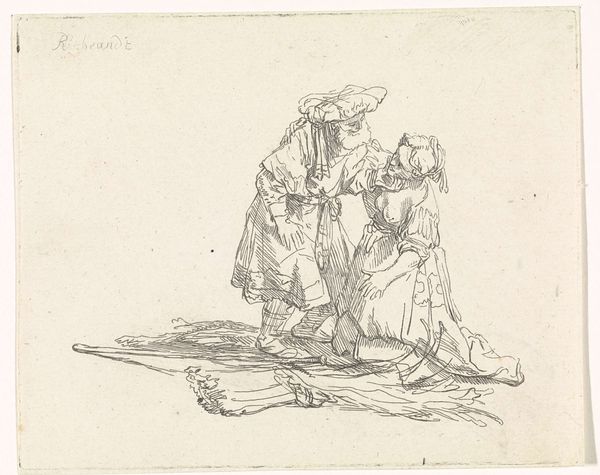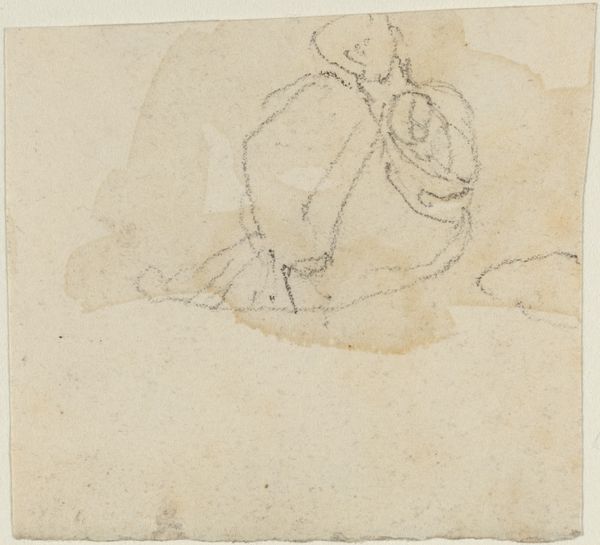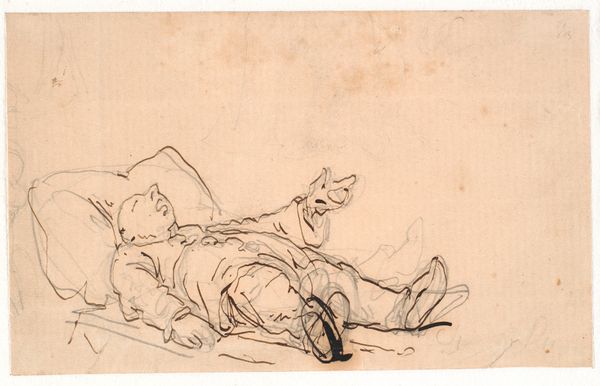
drawing, ink, pen
#
portrait
#
drawing
#
ink drawing
#
pen illustration
#
pen sketch
#
ink
#
sketch
#
sketchbook drawing
#
pen
Dimensions: height 85 mm, width 73 mm
Copyright: Rijks Museum: Open Domain
Editor: Here we have Ernst Willem Jan Bagelaar's "Vrouw met zwavelstok en lamp", dating sometime between 1798 and 1837. It’s an ink drawing, very sketch-like. It feels... grounded somehow, very immediate. What catches your eye when you look at this piece? Curator: I'm immediately drawn to the materiality of it – the ink, the pen strokes on paper. Notice how the varying pressure of the pen creates a sense of light and shadow, almost sculpting the scene. It invites questions about the availability and quality of the materials Bagelaar used and how those might influence the aesthetic we see. Also, consider the societal context – who was consuming art made with these relatively accessible materials at this time? Editor: That’s interesting, I hadn’t thought about the material accessibility. How does that relate to the subject matter, a woman with a sulphur match and lamp? Curator: Well, the subject herself hints at labor and domestic life. Sulphur matches were a relatively new invention at this time. This drawing potentially highlights a shift in labor practices, domesticity, and possibly even the rise of consumer culture related to the production and distribution of these new materials. Editor: So, it’s not just about the image, but also the production of the materials within it and that of the artwork itself? Curator: Precisely. How does Bagelaar's choice to use simple pen and ink connect to the woman's work depicted? Is he making a comment on the everyday, contrasting "high art" materials with a mundane scene? Editor: I see your point. It really grounds the image and shifts it away from just being a quaint genre scene. The making of it becomes integral to the story. Curator: Indeed. It pushes us to think about art not as isolated beautiful objects, but as things rooted in a network of materials, labour, and societal change. Editor: That definitely gave me a different way of looking at it! I never considered the implications of the materiality this deeply.
Comments
No comments
Be the first to comment and join the conversation on the ultimate creative platform.
